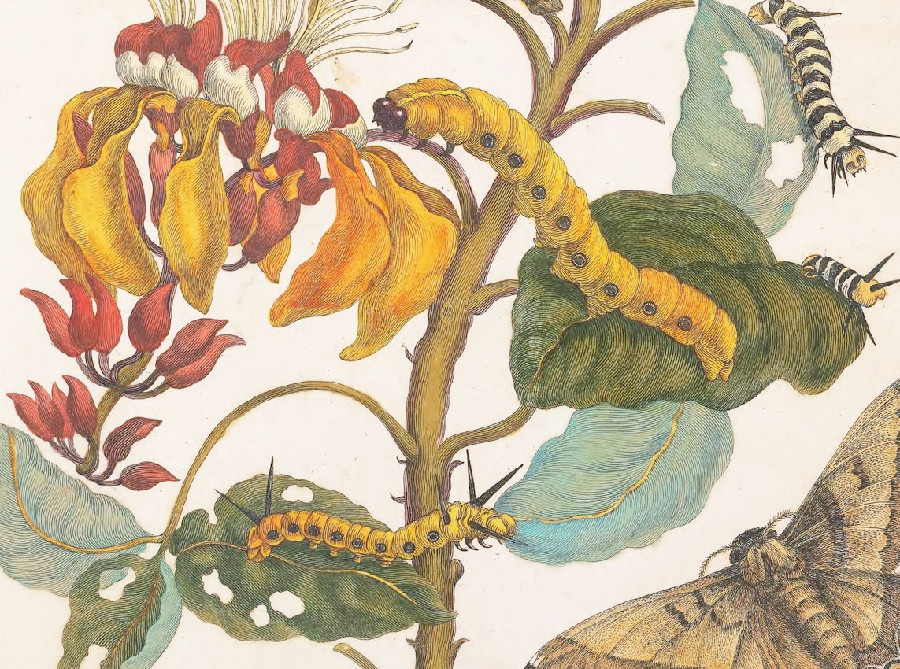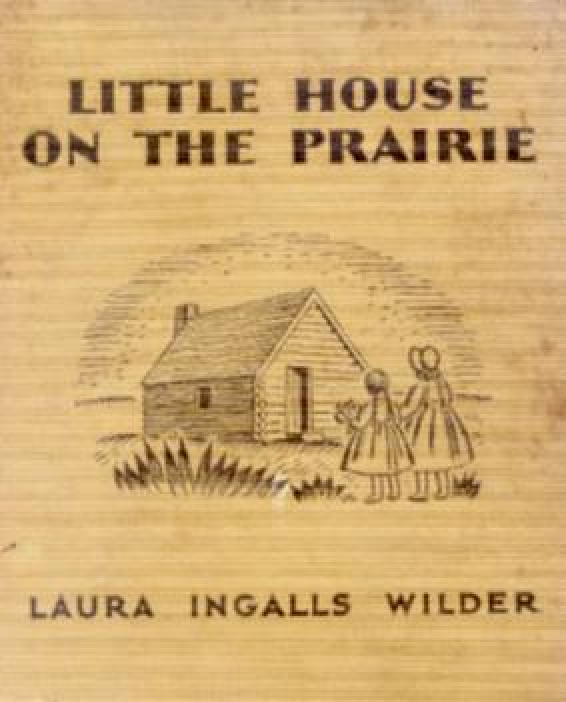
I once read about a small town in New Mexico that was overrun by tumbleweeds. After further research, the location became more realized to me: Clovis is a military town close to the Texas border where the land is flat and relatively featureless compared to the rest of the state. The Air Force base and dairy industry seem to be its only economic draws. In 2014, an avalanche of tumbleweeds trapped denizens in their homes until they were eventually freed by Clovis Public Works, Cannon AFB personnel, and civilian volunteers. When you join a public works department, this kind of maintenance is an appropriate, if not surreal, task. But, for people who join the Air Force, they are chasing one of two dreams: to become a fighter pilot or to defend this great country from the domestic terrorism of tumbleweeds.
While reading W.G. Sebald’s The Emigrants, there were times when I felt trapped inside the dense blocks of extensive and uninterrupted text. That Sebald’s family was “interrupted” by The Holocaust seems to significantly inform his style of writing, and, as I continued to read, I realized its utility. His technique reminded me of Proust’s galloping prose, sentences that charge forward and challenge the reader to keep pace. Proust and Sebald are authors both preoccupied with memory. The Emigrants evokes the horror of lost memory engendered by intentional historical erasure. In the village of Steinach, home to a pre-war Jewish community that has since disappeared, the narrator is disturbed by the village residents’ “difficulty remembering those who were once their neighbors and whose homes and property they appropriated, if indeed they remember them at all” (194). Sebald writes in a way that preserves and cherishes memory, his language tumbling across the page and daring us to forget. The book follows four exiles that are peripatetic, their paths reflecting the larger narrative of the Jews, a perpetually stateless people. When Sebald retraces their wanderings through history, he reignites long dormant synapses.
The biblical narrative of Jews wandering in the desert for forty years, searching for their promised land, is known as The Exodus. Growing up in Philadelphia, I attended numerous bat mitzvahs, quite used to the concentration of Jewish people in my vicinity. Their minimal presence in New Mexico was one of the first cultural differences I noticed when I moved here. I’d lived in New York for nine years, and before that almost three years in Los Angeles, the two American cities with the largest Jewish populations by far. But the desert is still ripe with metaphors of resiliency and rootlessness. Refugees travel hundreds of miles in search of a new home, traversing the xeric landscape of Mexico into the American southwest. They are confronted by arid empty expanses before they are swarmed by fearful residents who perceive them as invaders—an inhospitable environment, for sure. Just as the Jews fled Egypt for the Levant through a treacherous desert, so too did many other humans in existence. When English colonists arrived in North America, the indigenous population was wary. Sometimes this wariness is warranted, other times it is an unjustified fear response that breeds hostility and violence. The Atlantic Ocean was treacherous, as was the rugged American frontier. But humans will always navigate the wilderness in front of us because that is what we do.
The Ice Age allowed humans to cross the Bering Strait. Despite the danger, we wandered across a frozen ocean and found more land. In 1932, stone and bone tools were found in Clovis, New Mexico, and carbon dating suggests people existed in this region near the end of the Last Glacial Period (the Ice Age). In archaeology, they are termed the Clovis people, the accepted theory being that they were the first human inhabitants of the Americas. However, new excavations in the 21st century have shifted the scientific consensus from the “Clovis-first” theory to the acknowledgment of pre-Clovis cultures. Though the Clovis people may not have been the first to arrive, inhabitants of the American continents were eventually isolated from the rest of the world when the Ice Age ended, melting the bridge across the Bering Strait. This was about 11,700 years ago, when the Holocene epoch began and warmed the world enough for humans to start farming, leading us to discard our nomadic way of life. Humans sequestered in the Americas are the distant ancestors of who we recognize today as indigenous peoples.
Because we evolved as mobile hunter-gatherers, our instinct to wander will not fade no matter how many permanent settlements we build for ourselves. Sometimes we move out of necessity, other times out of curiosity. Sebald intentionally used the word “emigrant” instead of “immigrant” for his book title. The latter indicates a foreigner who resettles permanently in a new place, while the former indicates a person who has left their country to settle elsewhere. An immigrant has a home. An emigrant wants a home but does not have one yet. For an emigrant, their destination is uncertain.

W.G. Sebald bounced around quite a bit, often moving between Germany and England, depending on where his career was heading. The Emigrants introduces him right before he starts a new position in Norwich in September 1970. Three months later, the photo on the right was taken in Chandler, Arizona. A family in the foreground admires a Christmas tree made of tumbleweeds, a quirky local tradition. Albuquerque has a similar custom of building a 13-foot-tall Tumbleweed Snowman, spraypainted white, off Interstate 40 to usher in the holiday season. An enduring symbol of the American West, often cartoonishly elicited to emphasize emptiness or silence, tumbleweeds are arranged here as festive wintery motifs reminiscent of a chillier climate. Fittingly, the tumbleweed is actually an invasive species native to Eurasia that first spread to the US by way of a Russian export. Also known as “Russian thistle,” it grows from tiny green sprouts into massive, red-veined weeds. And the tumbling is essential: once mature, its diaspore (the part of the plant that assists in seed dispersal) dies, drying and hardening until it detaches from its shallow roots. The diaspore itself is what we recognize as a classic tumbleweed, so desiccated and filled with air pockets that it can be easily tossed and broken down by the wind, which scatters the seeds. It proliferates well in open environments that allow it to travel farther, unobstructed. Tumbleweeds are highly flammable and thrive in disturbed habitats, the disturbers being humans who have cleared plots for cultivation or development. They increase the risk of wildfires that damage the land we prize. But tumbleweeds are also an iconic symbol of the American frontier. They will never stop moving even if they destroy the land that allows them to wander.

The plant’s exterior is fragile, but this attribute is, paradoxically, what makes it resilient and prolific. There is, perhaps, no better way to describe human beings: resilient, abundant, and innately rootless. Since the beginning of the Holocene, when our dominant cultural model shifted from nomadic to sedentary, we have been the perfect invasive species, more effective than any common tumbleweed that roams the Earth. Wherever we go, we plant our seeds, encroach on habitats, and make the planet bend to our will, thus disrupting its hemostasis. We once had a symbiotic relationship with our ecosystem, and our original hunter-gatherer lifestyle has been maintained by a minority of the population, mostly indigenous groups, but it is no longer the dominant way of life. Our globalization carried Eurasian seeds to the US, just as enslavers carried Africans across the ocean and the ancient ancestors of indigenous peoples carried themselves across the Bering Strait. A foreigner becomes indigenous over time and eventually comes to define the badlands so unknown and perilous to others.
On a drive from Albuquerque to Taos, perhaps traveling along the same meridian as the Clovis people once did, I snapped a photo of the mesas west of Interstate 25 in San Felipe Pueblo. Because of the car’s movement, the details of the landscape are blurred, giving the image a softened painterly quality.

The skeletons of transplanted weeds and fossilized remains of globetrotting humans tell of our origins and itinerant spirit. What we leave behind is our legacy, and Sebald’s is a collection of words on the historically erased. When tumbleweeds pile up around buildings and trap us inside/outside our homes, we are reminded that none of us and all of us belong on this land. We are a part of the same diaspora, and we have no destination.




